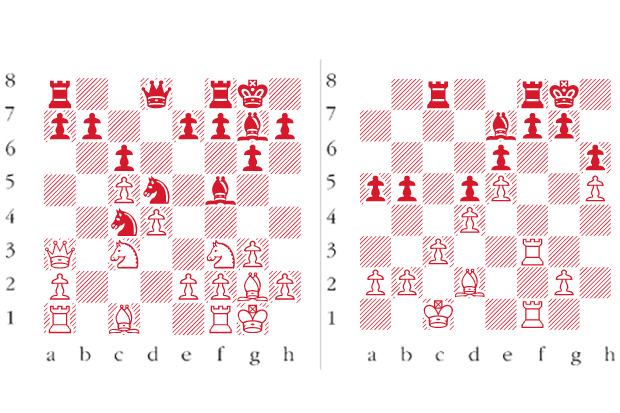In Kurosawa’s samurai warrior classic Sanjuro, the hero, a wandering Ronin played by Toshiro Mifune, ends the film in a face-off with his mortal enemy Hanbei Muroto. For a long moment the two martial swordsmen face each other in total immobility. Then, in a flash, a movement known by Samurai as Debana-Waza, Mifune slices his opponent in two, creating a violent fountain of blood.
There is an analogy to be made with the world chess championship, currently in progress in Chennai. After two quiet draws, the players are in a Debana-Waza state of immobile preparation, while awaiting the sudden stroke that will break the deadlock and propel one of the two into the lead.
Carlsen-Anand: World Championship (Game 1); Chennai 2013; Neo-Grunfeld Defence
1 Nf3 d5 2 g3 g6 3 Bg2 Bg7 4 d4 c6 5 0-0 Nf6 6 b3 0-0 7 Bb2 Bf5 8 c4 Nbd7 9 Nc3 Much stronger is 9 Nbd2. The text allows Anand to try an unusual manoeuvre which cedes White a central pawn majority but leaves him with a weak square on c4 which Black is quick to exploit. 9 … dxc4 10 bxc4 Nb6 11 c5 Nc4 12 Bc1 Nd5 13 Qb3 Na5 14 Qa3 Nc4 15 Qb3 Na5 16 Qa3 Nc4 (see diagram 1) Draw agreed, Carlsen has neatly sidestepped his difficulties but it would be perilous to seek to avoid the draw by repetition of position which has ensued.
Anand-Carlsen: World Championship (Game 2); Chennai 2013; Caro-Kann Defence
1 e4 c6 The Caro-Kann has not been a major choice for Carlsen in past games. His decision to use it here indicates that he must have put in many hours of detailed analysis to establish its viability at the highest level. 2 d4 d5 3 Nc3 dxe4 4 Nxe4 Bf5 5 Ng3 Bg6 6 h4 h6 7 Nf3 e6 8 Ne5 Bh7 9 Bd3 Bxd3 10 Qxd3 Nd7 11 f4 Bb4+ 12 c3 Be7 13 Bd2 Ngf6 14 0-0-0 In the game Anand-Ding Liren, Paris 2013, White played 14 Qe2 here and won the game.






Comments
Join the debate for just £1 a month
Be part of the conversation with other Spectator readers by getting your first three months for £3.
UNLOCK ACCESS Just £1 a monthAlready a subscriber? Log in